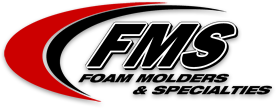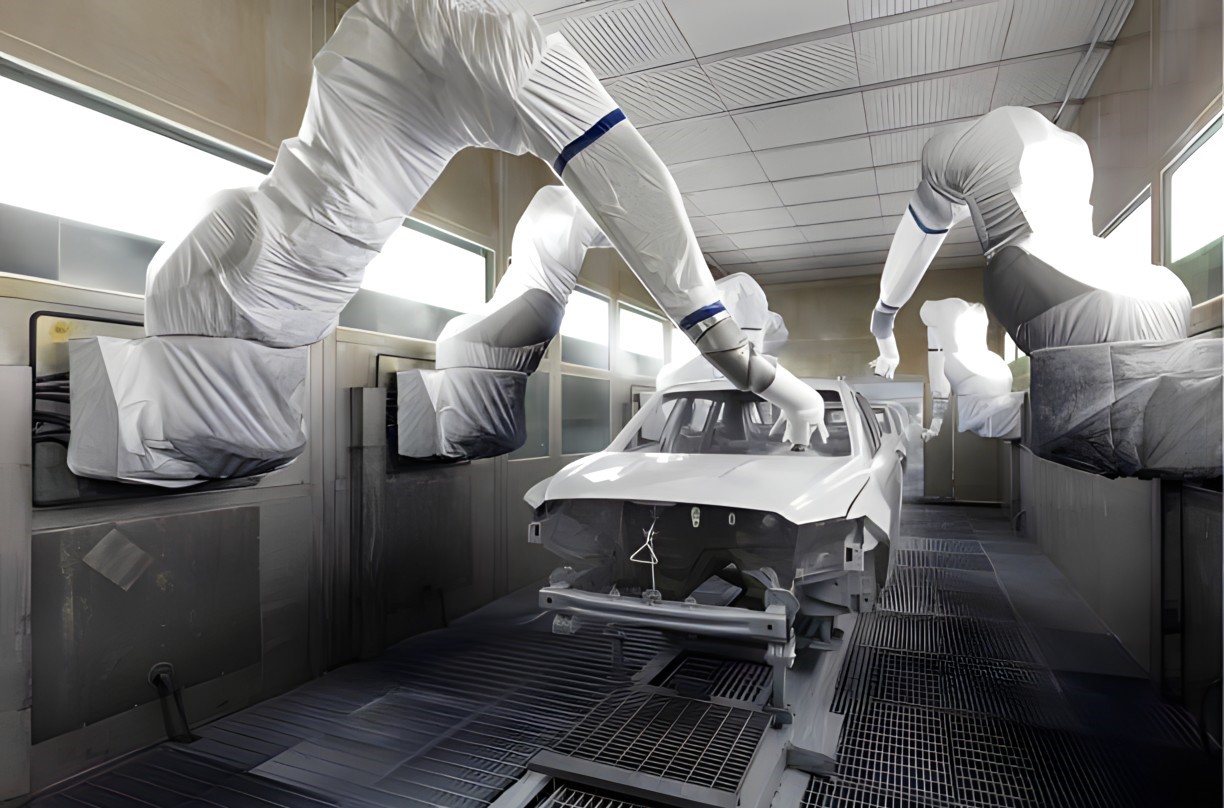Production painting is a key function in automotive and aviation production processes. For OEMs and manufacturers alike, a high-quality painting process is vital in ensuring that the vehicle has the required finish and the durability to withstand extremes in temperatures and climatic factors that it may be subjected to.
In this blog post, we will explore how production painting capabilities can help manufacturers streamline their operations and improve their products. We will look at how such capabilities can be leveraged to provide superior results in terms of cost, quality, and efficiency. Finally, we also discuss how we at Foam Molders take care of production painting for our automotive and aviation clients.
What is Production Painting for Automotive Parts?
Production painting is the process of applying paint to vehicles or equipment in a production setting. This can be done by hand or by machine, and the parts can be painted individually or in batches. Production painting is typically used for high-volume applications, where speed and efficiency are paramount.
The most important thing to note here is that there needs to be consistency in terms of the color and the texture of the paint on all parts being used. Cars and commercial airplanes, for instance, are high-ticket items where there is a lot of value being placed on the appearance and branding. There is no room for error when it comes to interior and exterior painting. In most cases, robotics and computer-aided processes are used to make sure that the paint being used is consistent in color and that the painting process is done perfectly.
Many aviation and automotive industry players have an in-house body shop where the painting is carried out. But in many cases, there may be parts that are coming in from OEMs and fabricators. Procuring them and then painting these parts can often put pressure on the manufacturing process, especially in cases where lean manufacturing methods are used. In these situations, OEMs and other part manufacturers are roped in for painting services for the parts being supplied too.
What are the Various Methods Used for Production Part Painting?
There are various methods used for production painting, including powder coating, wet painting, and electrostatic painting. Powder coating is a dry finishing process that uses finely ground particles of pigment and resin that are sprayed onto the surface of the auto parts. Wet painting is a process that uses liquid paint that is applied to the surface of the thr parts using a spray gun in most cases. Electrostatic painting is a process that uses an electrical charge to attract the paint particles to the surface of the parts.
The best method of painting Depends on the type of paint being used, the size of the part being painted, and the material of which the part is made. Suppose we’re looking at a foam fabricated part meant for the interior of the automobile. The painting process would be quite different compared to painting the aluminum substrate of a commercial jet’s airframe.
What are the Challenges in Production Painting Parts?
The exterior of production painted parts is often subjected to very harsh conditions, with exposure to sun, rain, wind, and snow, on top of dents, scratches and cosmetic issues. The paint has to withstand these tough conditions and should also be easily cleanable to ensure that it retains its quality.
One of the other challenges in painting parts is that the surfaces to be painted are often irregular, making it difficult to achieve an even coat of paint. In addition, components are often made of metals such as stainless steel that require special primers and paint formulations to adhere properly. These challenges can make painting a time-consuming and expensive process.
What are the Various Types of Paints Used?
There are three primary types of paint used in production painting:
- solvent-based
- water-based
- powder coating
Solvent-based paints are typically used for primers and top coats, as they provide good coverage and a smooth finish. Water-based paints are often used for base coats, as they dry quickly and allow for multiple layers to be applied in a short period. Powder coating is typically used for final finishes, as it provides a durable and long-lasting finish.
How does the Production Painting Process Look Like?
The most crucial factor to consider when starting the production painting process is the type of paint being used. Some types of paint are not compatible with certain types of materials, so it is important to choose a process that can accommodate the type of paint being used.
Another important factor to consider is the size of the parts being painted. Some processes are better suited for small parts, while others can handle larger parts. It is also important to consider the throughput requirements of the application.
Once the process is defined and the paint has been selected, the next step is to determine the best way to apply the paint. This will vary depending on the type of part being painted and the desired finish. Common methods include spraying, dipping, and roller coating. Each method has its advantages and disadvantages, so it is important to select the method that best suits the application.
While the approach can vary significantly depends on what’s being painted, let’s take a closer look here at one particular example: production part painting for cars.
The first step in the process is to get part’s surface as clean as possible. This includes washing the surface, degreasing it, sanding it down to ensure that there are no impurities or rust and chemically treating it. Processes like sandblasting are also sometimes carried out to ensure that the surface is free of contaminants and rust.
Once the surface has been cleaned thoroughly, the epoxy primer can be applied to the metal substrate. The primer is applied via cathodic e-coating or spray paint application. The primer makes sure that the part is evenly covered and protected from rust, UV light, and other external factors. This is essential in making the rest of the paint application process painfree.
The next part of the process is applying the base coat of paint. The base coat gives the car or component its desired color. Here’s where technology also comes into play. Ensuring that you are applying the exact shade of the paint as designed is key.
At Foam Molders, we use an X-Rite computer-aided color verification system with a five-angle reader (spectrometer). This assures consistency in the color being used.
The next step is to apply a clear coat of paint. The clear coat ensures that the other layers are sealed and protected from external elements such as sun, rain, and snow. This layer is also important in determining the final finish of the part.
Finally, the part needs to be cured and baked to ensure that the different layers are sealed in place and there are no abnormalities. A manual inspection of the part is also needed at this point to make sure that there are no visible deformations or issues.
Once these steps are completed, the part can be packed and shipped to the OEM or the auto manufacturer.
How do Foam Molders Leverage Advanced Technology for Production Painting?
Foam Molders Inc has long been a leader in the fabrication and production part painting. With an ever-changing technological landscape, we have had to continuously adapt our methods and technologies to stay ahead of the competition. We have invested heavily in research and development to create new methods and technologies for the production of auto and aviation parts using methods like vacuum forming and Reaction injection molding. We also pay equal attention to painting these parts to ensure a great-quality finish. As a result, Foam Molders Inc can offer their customers the highest quality production painted parts available on the market.
We use advanced automated spectrometer systems to ensure that the paint being used is consistent. Our X-Rite system ensures this. We also constantly innovate various methods which can give the best finish on the parts with minimum deformities and issues. We also take extra care to finish all painting work in a timely manner so that your production doesn’t stop.
Closing Thoughts
The paint job on any automobile, plane, or piece of industrial equipment is often the first thing that catches the eye of potential customers. A poorly executed paint job can have negative consequences, affecting your brand image and leading to dissatisfied customers.
To ensure a top-notch production painting process, it is essential to utilize the right kind of paint, employ the correct application techniques, and guarantee that the color and application are consistent enough to withstand the harsh elements and heavy loads that are common in the transportation industries.
Here at Foam Molders, we take pride in our association with prominent auto and aviation manufacturers worldwide. We specialize in the fabrication and painting of a variety of parts, including autobody, internal components, and cabinetry. Our team works closely with OEMs and manufacturers to provide high-quality results and quick turnaround times. Contact us today to learn more about our proven methods.

